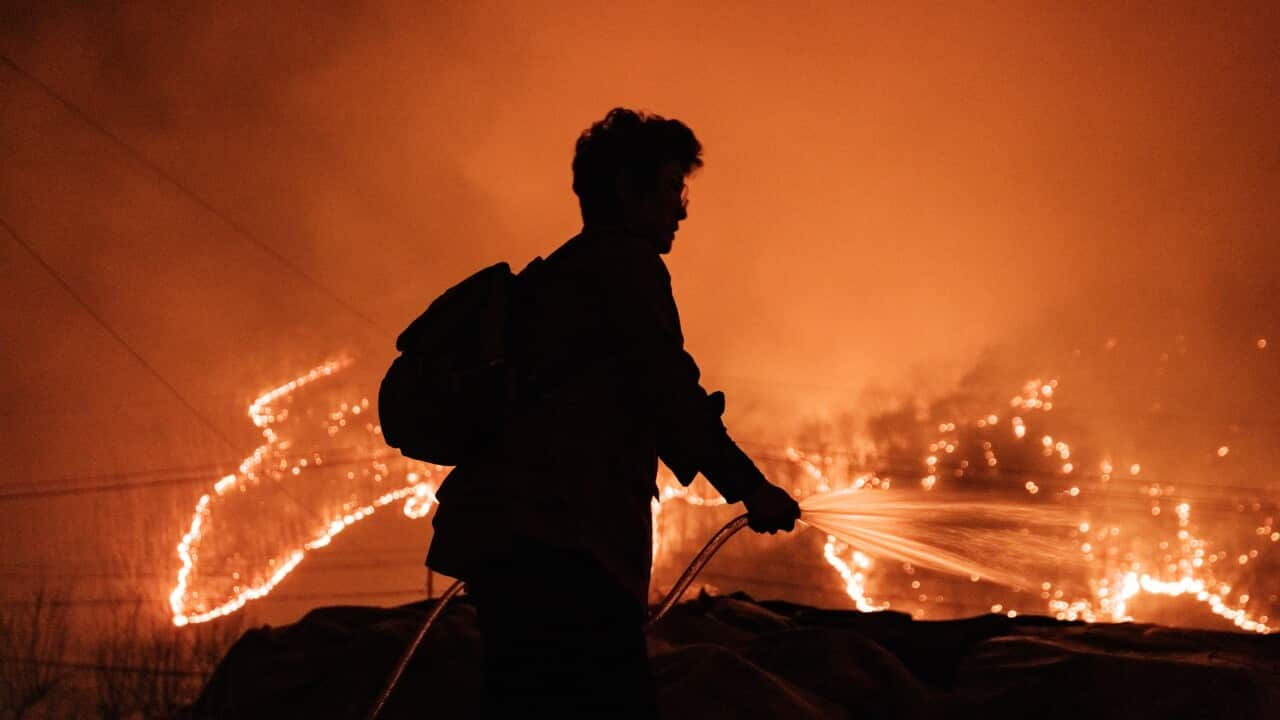Key Points
- Wildfires that broke out in South Korea days ago continue to ravage the country’s south-east.
- At least 27 people have been killed and 37,000 have been forced to flee.
- South Korea’s acting president Han Duck-soo says the fires are the ‘most devastating’ in the country’s history.
The National Fire Agency said at least 26 other people sustained varying degrees of injuries.

Multiple blazes have caused “unprecedented damage”, South Korea’s acting president has said. Source: AFP / Yasuyoshi Chiba
More than 35,000 hectares of forest have been burned, Lee Han-kyung, disaster and safety division chief said, adding that the fire was still spreading “rapidly”.
Authorities said changing wind patterns and dry weather had revealed the limitations of conventional firefighting methods.

More than 27,000 people were forced to evacuate due to the wildfires. Source: AFP / Yasuyoshi Chiba
“A small amount” of between five and 10 millimetres of rain was expected on Thursday.
Officials in several southeastern cities and towns had ordered residents to leave on Tuesday as firefighters struggled to contain multiple blazes fuelled by dry winds.
The blaze in Uiseong destroyed nearly half of more than 30 structures at Gounsa, a temple that was said to be originally built in the seventh century.

Most of the buildings at Gounsa Temple in Uiseong were burned to the ground during the wildfire outbreaks. Source: AFP / Yasuyoshi Chiba
Among the destroyed structures were two state-designated “treasures”: a pavilion-shaped structure built on a stream in 1668 and a Joseon Dynasty structure built in 1904 to mark the longevity of a king.
The temple’s other state-designated “treasure”, a stone Buddha statue reportedly manufactured in the eighth century, was moved to a safe place, according to government and Buddhist officials.

A firefighter extinguishing the remaining flames after most of the buildings were burned to the ground in a wildfire at Gounsa Temple in Uiseong. Source: AFP / Yasuyoshi Chiba
The Korea Forest Service said it had raised its wildfire warning to the highest “serious” level nationwide on Tuesday, requiring local governments to assign more workers to emergency response, tighten entry restrictions for forests and parks, and recommend that military units withhold live-fire exercises.
Government officials suspect human error caused several of the fires, possibly due to the use of fire while clearing overgrown grass in family tombs or sparks from welding work.
